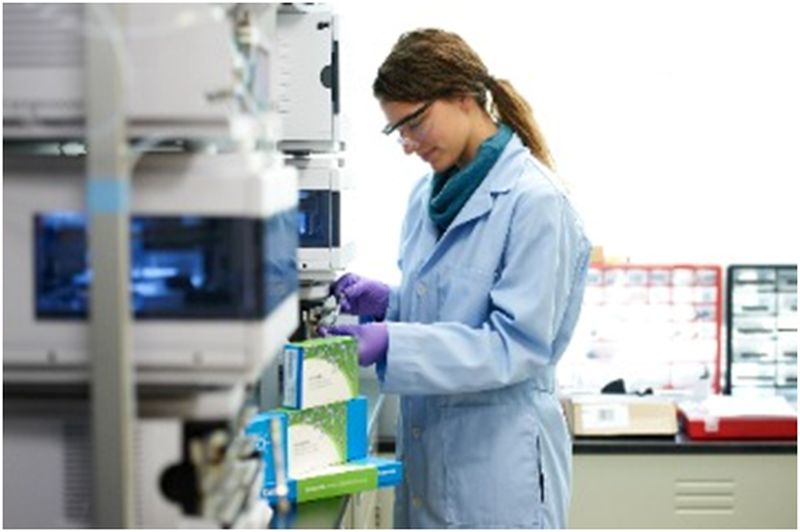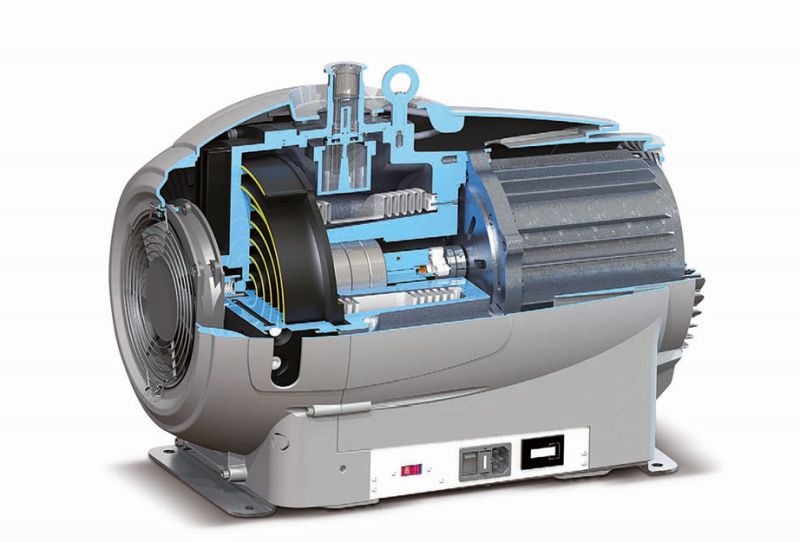Oil-free vacuum pumps make all the difference for research and industrial applications, as well as for the environment. Stay up-to-date with the latest industry news.
Intro: What is a vacuum pump and what is it used for?

For starters, it is important to know that ‘vacuum’ technology lies at the heart of every research and development, practically every branch of high-energy physics, particle acceleration, and surface science. This includes the study of particle physics, particle accelerators and nuclear fusion. Vacuum science has also been fundamental to major scientific breakthroughs, such as the recent discovery and recording of gravitational waves. A vacuum scientific definition is “a space with a pressure significantly lower than the surrounding atmospheric pressure.” In a perfect scenario, there is no matter left in the area. In reality, the pressure is so low that any particles in the space do not affect any activities being carried on inside.
The highest level of vacuum reachable on our planet is known as Ultra-High Vacuum (UHV). All major advances in ion pump technology have developed from Varian Vacuum (now Agilent Vacuum) from 1957 on with the sputter ion pump and the ConFlat Flange (CFF).
What is the difference between regular oil-sealed vacuum pumps and oil-free ones? Are they really better?

To understand the advantages and disadvantages of oil-sealed vacuum pumps versus oil-free ones, it is necessary to understand the way they work.
You may also find oil-free vacuum pumps under the name “dry pumps”. This comes from the fact that oil-free vacuum pumps operate without the use of oil as a sealant element in the pump.
Agilent IDP pumps, for example, use a basic dual-scroll mechanism to create a vacuum. They do not use hydrocarbons as a vacuum-tight element to create and maintain vacuum in the dual-scroll device.
They have a wonderful way of working without utilizing oil. A dual-scroll mechanism, consisting of two scrolls put one inside the other, serves as the foundation. When one nested scroll spins and rotates within the other, the gas inside the system is collected in the moving areas and pushed along the scroll. The gas is moved and forced toward the centre hub, where it is eventually exhausted. You can attain the required emptiness for your experimentusing this simple method.
Have a look at the visual for the process on the Agilent Dry Scroll Pumps page. https://www.agilent.com/en/product/vacuum-technologies/dry-scroll-pumps
An oil-sealed vane pump, on the other hand, employs a spinning cylinder with slots (or rotor) that house a series of rotating vanes inside the hollow. Inside the casing bore, the rotor is misaligned. The vanes glide in and out as the rotor revolves, allowing gases to pass past the pump.
This is typically oil-sealed, which means the oil provides a strong seal and supports for a vacuum of up to 0.5 mBar.
The practical side: oil-free versus oil-sealed pumps
Oil-free pumps pack significant advantages. Contrary to oil pumps, they fully remove the chance of hydrocarbons spilling, leaking, or penetrating the vacuum system, which is a common and irritating problem with oil pumps. The lack of oil, moreover, minimizes pollutants in the air, water, and soil, lowering their already low carbon footprint.
But the advantages don’t stop there.
Maintenance-free and pollution-free: the difference with oil vacuum pumps
The latest oil-free vacuum pumps have been specifically developed to overcome some of the daily challenges faced with old-school, oil pumps. The most important is oil replacement, which should be done every 6 to 12 months or anytime the oil begins to discolour. The oil must also be disposed of, which makes it worse: the cost of disposing of the used oil may be higher per litre than the price of purchase of the clean oil.
Oil is also the leading cause of technical problems. Oil starvation or clogged lubrication passageways are common causes of rotary vane pump failure, causing the owner to rush in expensive repair calls in order to reduce unscheduled downtime.
To avoid those issues such as loud noise, oil leaks, and pump failures, the solution has been found to completely remove the oil. This improvement allows researchers to forget those major sources of annoyance, additional costs, and lost productivity.
How Oil-Free Vacuum Pumps Can Make An Amazing Difference with 5 Real Use Cases
Choosing an oil-free vacuum pump has immediate advantages in terms of work environment, as well as in time and money savings.
1. Superior to pumps of the same size
Despite the lack of oil, the performance of these vacuum pumps is untouched. On the contrary, Dry IDP scroll pumps are able to provide an even more powerful vacuum with high gas flow and quick pumping rates. Dry Scroll Pumps (IDP) can pump down very quickly to low base pressures, increasing the performance of the turbo pump and ensuring the overall stability and dependability of the system.
2. Inside your lab it’ll be cleaner, outdoors greener
No oil means no leaks. Hydrocarbons pouring on the outside or infiltrating the vacuum system are completely prevented when using oil-free IDP scroll pumps. Furthermore, the absence of oil reduces their already lower environmental impact. Pollution in the air, water, and soil is significantly minimized with IDP scroll pumps.
A direct consequence of this aspect is that scroll pumps have a lower total cost of ownership as well. There is no more need for costly oil topping, changing, and hazardous waste removal.
Agilent has received the Business Intelligence Group’s 2018 Sustainability Leadership Award for its dedication to sustainability through producing high-quality products and innovative product design.
3. Gentle on the ears
The oil-free technology allowed the hydrocarbon exhaust and oil mist filter to be omitted. There’s also no need for a Quiet Cover. Everyone in the lab can now enjoy their workday more, thanks to the reduced noise and vibration.
This isn’t a fortuitous feature: Agilent purposefully consulted noise specialists while designing their IDP scroll pump module to achieve quiet operation.
Take a look at how the Agilent IDP scroll pumps perform up versus common everyday noises.
| Noise | dBA |
| Chainsaw; thunder clap | 120 |
| Car horn (1 m); live rock music | 110 |
| Lawn mower; airplane take off (1 km) | 100 |
| Motorcycle (8 m away) | 90 |
| Freight train (25 m); food blender | 80 |
| Cars on freeway; vacuum cleaner | 70 |
| Air conditioning (30 m); office noise | 60 |
| Agilent IDP-10 | 53 |
| Agilent IDP-7 | 52 |
| Conversation at home; Agilent IDP-15 | 50 |
| Library | 40 |
4. Like new in less than 15 minutes
Technological innovation means an easier life for scientists and researchers as well. IDP scroll pumps, unlike standard pumps, only require a 15-minute seal repair just by using two basic tools. Even yet, because Agilent solid tip seals are meant to last up to three years, this procedure can be done sparingly.
Agilent IDP scroll pumps, despite their simple construction, can achieve a very low base pressure of 10 mTorr.
5. Pump installation and integration are simple all around the world.
IDP pumps are not only easy to use, they are also easy to install. Oil-free pumps are low-maintenance, require no special voltage, and can even be installed inside cabinet enclosures. Because of their small footprint, lightweight, and low power consumption, they may well be fitted into any system design.
For example, the Agilent IDP-3 dry scroll pump is the smallest scroll pump for typical vacuum applications and weighs only 9.5 kg (21 lb).
Agilent’s IDP scroll pumps also use standard IEC power cords that aren’t hard-wired to the motor, allowing them to be used anywhere in the world. You may also switch between high and low voltage operations with a simple switch.
Scroll pumps in the real world: where to find them

Vacuum is required in a range of applications, from nuclear fusion and space research to food packaging and analytical instrumentation. Here are some of the most unusual vacuum applications and how they operate with Agilent pumps: https://www.agilent.com/en/product/vacuum-technologies
Typical Scroll Pumps Applications include mass spectrometry, sample preparation, electron microscopy and freeze-drying.
- No messy maintenance, no risk of contamination
- Inlet isolation valve protects the vacuum system during power outages
- No silent cover is required for operation.
- Clean, oil-free vacuum passage
- Protected bearings allow the use of light solvents
- There’s no need for tedious maintenance, and there’s no chance of contamination.
- During power outages, the turbo pump baked by the scroll pump (if any) is protected by an inlet isolation valve
- The operation does not necessitate the use of a quiet cover
- Vacuum passage that really is oil-free and clean
- Light solvents can be used thanks to the protected bearings
- The quietest model of operation
- Long-term durability
- Scroll pumps minimized vibrations have no impact on the instrument
- An inlet isolation valve provides system safety
- Noise level is kept to a bare minimum, making it ideal for laboratory use
- Water vapour tolerance is high, and the bearings are shielded
- Gas ballast is included to help with water vapour handling
Moreover, glove box compatibility and helium recirculation allow a significant variety of scientific research and developments to rely on Agilent’s dry pumps today.
Article Submitted By Community Writer




